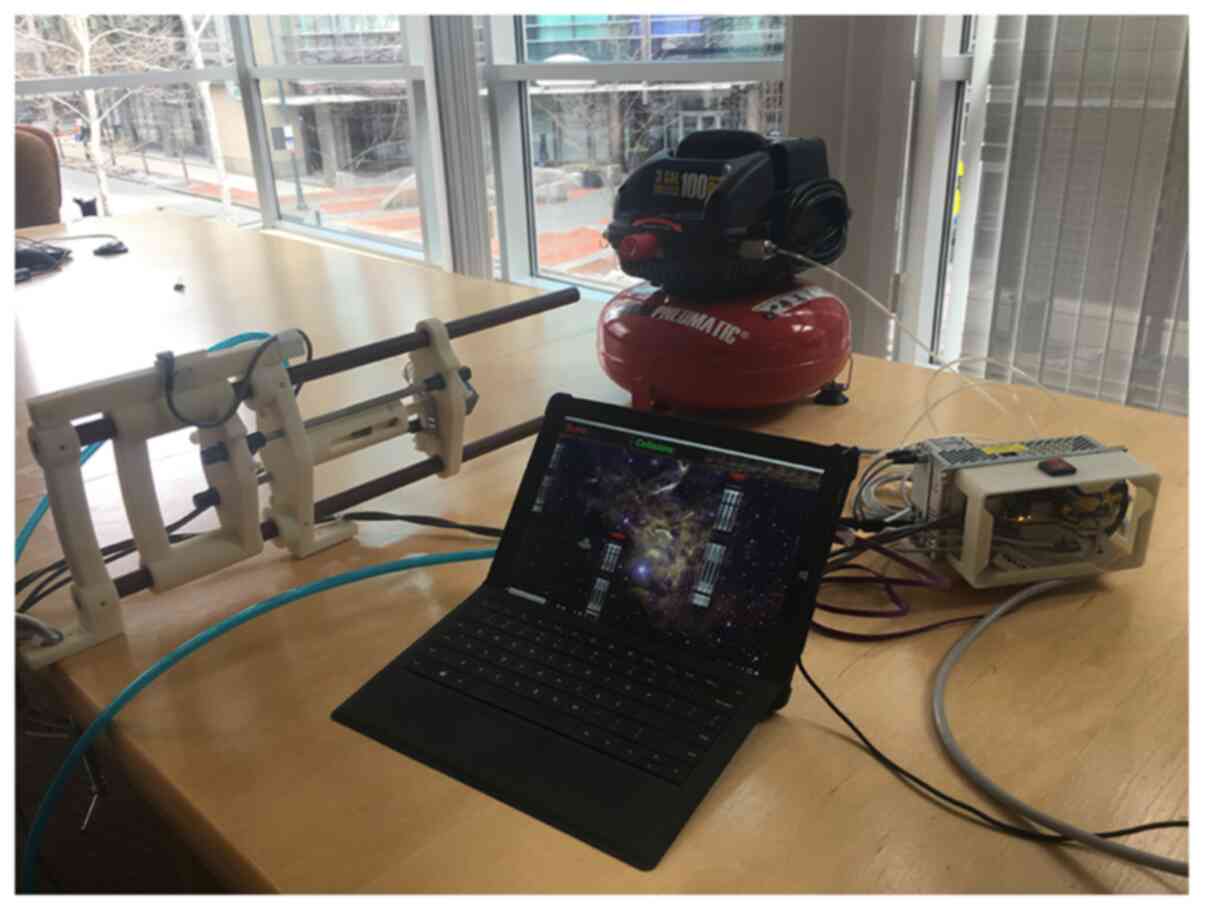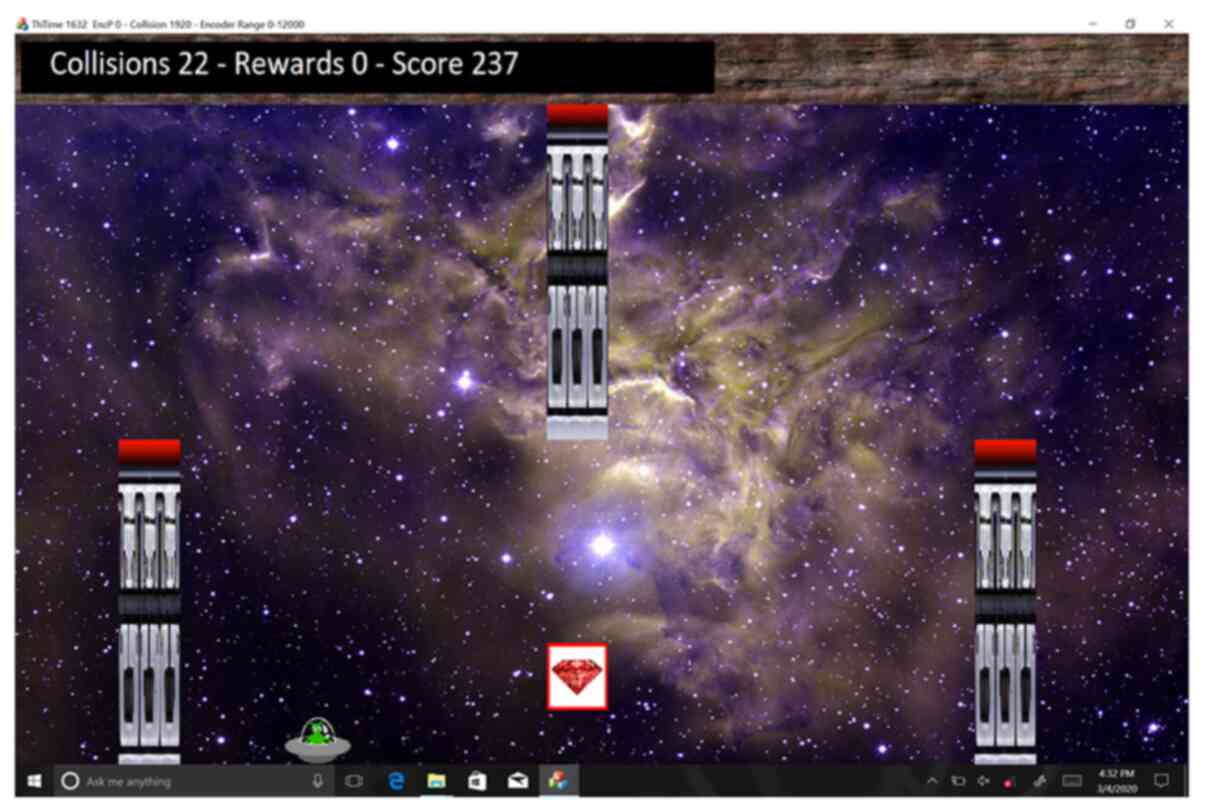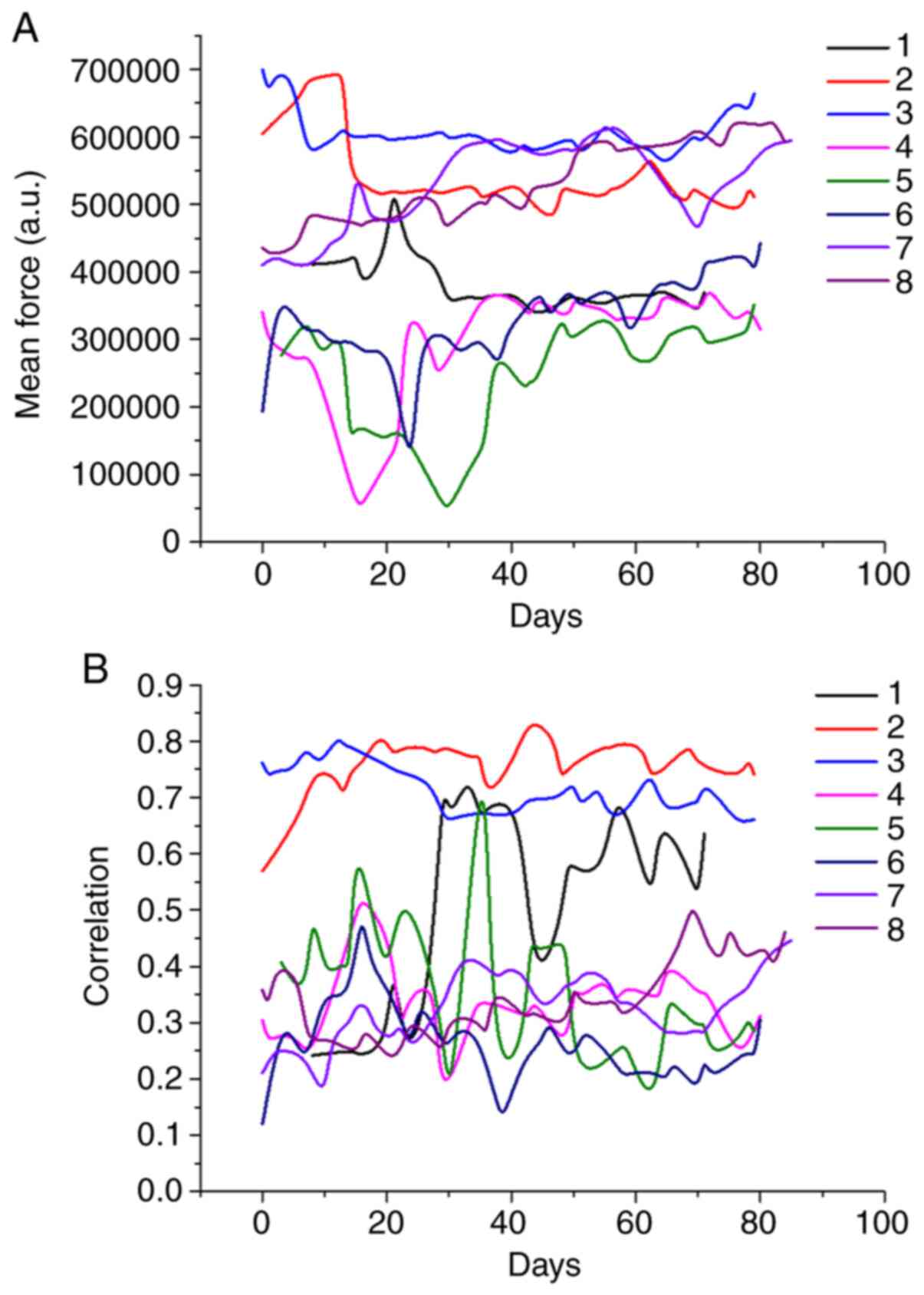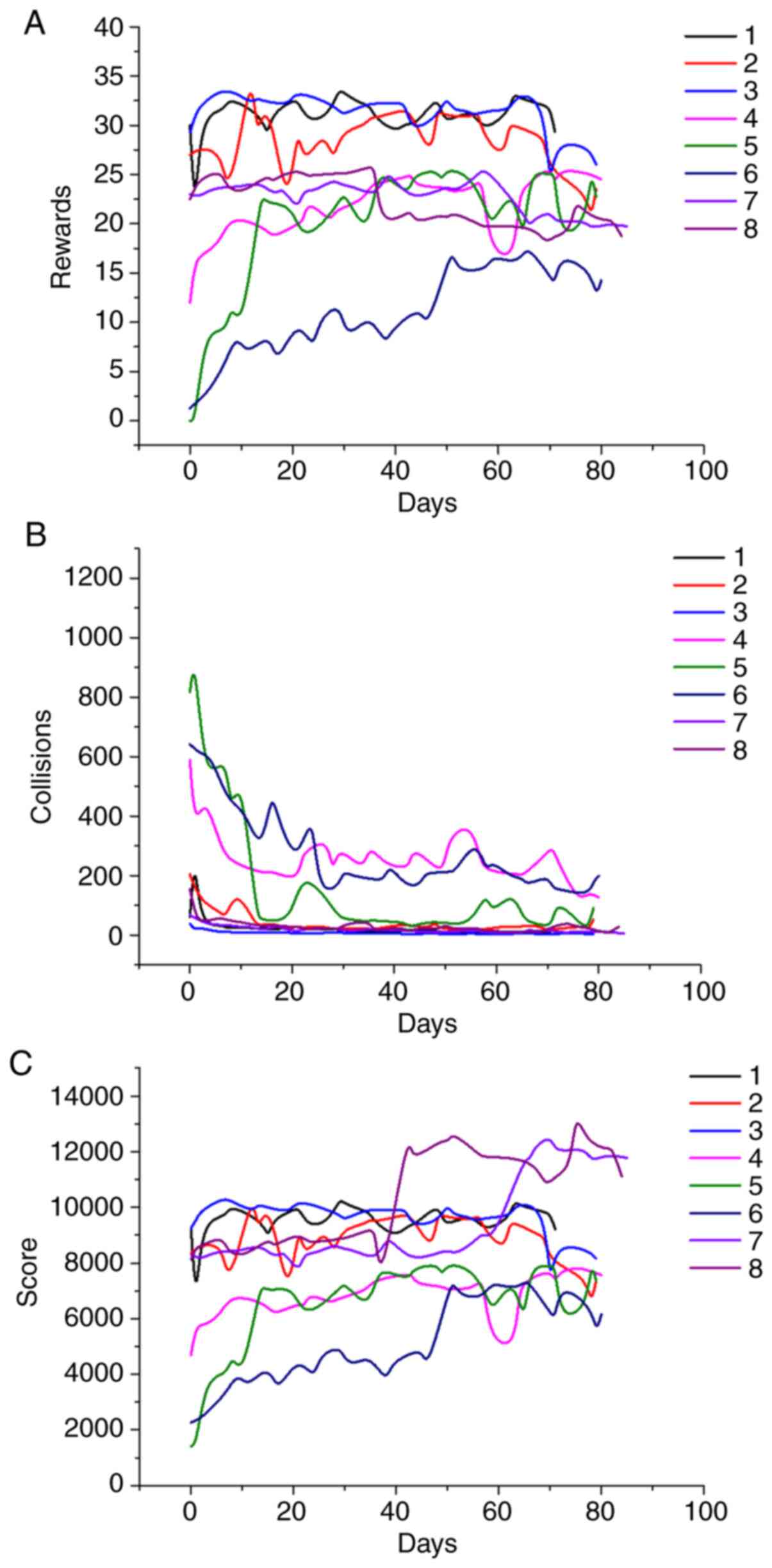|
1
|
Virani SS, Alonso A, Benjamin EJ,
Bittencourt MS, Callaway CW, Carson AP, Chamberlain AM, Chang AR,
Cheng S, Delling F, et al: Heart disease and stroke statistics-2020
update: A report from the American Heart Association. Circulation.
141:e139–e596. 2020.PubMed/NCBI View Article : Google Scholar
|
|
2
|
Centers for Disease C and Prevention
(CDC). Public health and aging: Hospitalizations for stroke among
adults aged >/=65 years-United States, 2000. MMWR Morb Mortal
Wkly Rep. 52:586–589. 2003.PubMed/NCBI
|
|
3
|
Indredavik B, Slordahl SA, Bakke F,
Rokseth R and Haheim LL: Stroke unit treatment. Long-term effects.
Stroke. 28:1861–1866. 1997.PubMed/NCBI View Article : Google Scholar
|
|
4
|
Kwakkel G, Kollen B and Lindeman E:
Understanding the pattern of functional recovery after stroke:
Facts and theories. Restor Neurol Neurosci. 22:281–299.
2004.PubMed/NCBI
|
|
5
|
Ballester BR, Maier M, Duff A, Cameirão M,
Bermúdez S, Duarte E, Cuxart A, Rodríguez S, San Segundo Mozo RM
and Verschure PFMJ: A critical time window for recovery extends
beyond one-year post-stroke. J Neurophysiol. 122:350–357.
2019.PubMed/NCBI View Article : Google Scholar
|
|
6
|
Dobkin BH and Dorsch A: New evidence for
therapies in stroke rehabilitation. Curr Atheroscler Rep.
15(331)2013.PubMed/NCBI View Article : Google Scholar
|
|
7
|
Friedrich R, Hiesel P, Peters S, Siewiorek
DP, Smailagic A and Brugge B: Serious games for home-based stroke
rehabilitation. Stud Health Technol Inform. 213:157–160.
2015.PubMed/NCBI
|
|
8
|
Tamayo-Serrano P, Garbaya S and Blazevic
P: Gamified in-home rehabilitation for stroke survivors: Analytical
review. Int J Ser Games. 5:2018.
|
|
9
|
Fazekas G and Tavaszi I: The future role
of robots in neuro-rehabilitation. Expert Rev Neurother.
19:471–473. 2019.PubMed/NCBI View Article : Google Scholar
|
|
10
|
Lee HS, Park YJ and Park SW: The effects
of virtual reality training on function in chronic stroke patients:
A systematic review and meta-analysis. Biomed Res Int.
2019(7595639)2019.PubMed/NCBI View Article : Google Scholar
|
|
11
|
Chang WH and Kim YH: Robot-assisted
therapy in stroke rehabilitation. J Stroke. 15:174–181.
2013.PubMed/NCBI View Article : Google Scholar
|
|
12
|
Cho KH, Hong MR and Song WK: Upper limb
robotic rehabilitation for chronic stroke survivors: A single-group
preliminary study. J Phys Ther Sci. 30:580–583. 2018.PubMed/NCBI View Article : Google Scholar
|
|
13
|
Oldfield RC: The assessment and analysis
of handedness: The Edinburgh inventory. Neuropsychologia. 9:97–113.
1971.PubMed/NCBI View Article : Google Scholar
|
|
14
|
Fugl-Meyer AR, Jääskö L, Leyman I, Olsson
S and Steglind S: The post-stroke hemiplegic patient. 1. a method
for evaluation of physical performance. Scand J Rehabil Med.
7:13–31. 1975.PubMed/NCBI
|
|
15
|
Lyle RC: A performance test for assessment
of upper limb function in physical rehabilitation treatment and
research. Int J Rehabil Res. 4:483–492. 1981.PubMed/NCBI View Article : Google Scholar
|
|
16
|
Ansari NN, Naghdi S, Arab TK and Jalaie S:
The interrater and intrarater reliability of the Modified Ashworth
Scale in the assessment of muscle spasticity: Limb and muscle group
effect. NeuroRehabilitation. 23:231–237. 2008.PubMed/NCBI
|
|
17
|
Mathiowetz V, Volland G, Kashman N and
Weber K: Adult norms for the Box and Block Test of manual
dexterity. Am J Occup Ther. 39:386–391. 1985.PubMed/NCBI View Article : Google Scholar
|
|
18
|
Ottensmeyer MP, Li S, De Novi G and Tzika
AA: Functional MRI in conjunction with a novel MRI-compatible
hand-induced robotic device to evaluate rehabilitation of
individuals recovering from hand grip deficits. J Vis Exp:
10.3791/59420, 2019.
|
|
19
|
Khanicheh A, Mintzopoulos D, Weinberg B,
Tzika AA and Mavroidis C: MR_CHIROD v.2: Magnetic resonance
compatible smart hand rehabilitation device for brain imaging. IEEE
Trans Neural Syst Rehabil Eng. 16:91–98. 2008.PubMed/NCBI View Article : Google Scholar
|
|
20
|
Khanicheh A, Muto A, Triantafyllou C,
Weinberg B, Astrakas L, Tzika A and Mavroidis C: fMRI-compatible
rehabilitation hand device. J Neuroeng Rehabil.
3(24)2006.PubMed/NCBI View Article : Google Scholar
|
|
21
|
Woytowicz EJ, Rietschel JC, Goodman RN,
Conroy SS, Sorkin JD, Whitall J and McCombe Waller S: Determining
levels of upper extremity movement impairment by applying a cluster
analysis to the fugl-meyer assessment of the upper extremity in
chronic stroke. Arch Phys Med Rehabil. 98:456–462. 2017.PubMed/NCBI View Article : Google Scholar
|
|
22
|
Page SJ, Fulk GD and Boyne P: Clinically
important differences for the upper-extremity Fugl-Meyer Scale in
people with minimal to moderate impairment due to chronic stroke.
Phys Ther. 92:791–798. 2012.PubMed/NCBI View Article : Google Scholar
|
|
23
|
Chen HM, Chen CC, Hsueh IP, Huang SL and
Hsieh CL: Test-retest reproducibility and smallest real difference
of 5 hand function tests in patients with stroke. Neurorehabil
Neural Repair. 23:435–440. 2009.PubMed/NCBI View Article : Google Scholar
|
|
24
|
Comani S, Velluto L, Schinaia L, Cerroni
G, Serio A, Buzzelli S, Sorbi S and Guarnieri B: Monitoring
neuro-motor recovery from stroke with high-resolution EEG, robotics
and virtual reality: A proof of concept. IEEE Trans Neural Syst
Rehabil Eng. 23:1106–1116. 2015.PubMed/NCBI View Article : Google Scholar
|
|
25
|
Clark WE, Sivan M and O'Connor RJ:
Evaluating the use of robotic and virtual reality rehabilitation
technologies to improve function in stroke survivors: A narrative
review. J Rehabil Assist Technol Eng.
6(2055668319863557)2019.PubMed/NCBI View Article : Google Scholar
|
|
26
|
Mubin O, Alnajjar F, Jishtu N, Alsinglawi
B and Al Mahmud A: Exoskeletons with virtual reality, augmented
reality, and gamification for stroke patients' rehabilitation:
Systematic review. JMIR Rehabil Assist Technols.
6(e12010)2019.PubMed/NCBI View
Article : Google Scholar
|
|
27
|
Byl NN, Abrams GM, Pitsch E, Fedulow I,
Kim H, Simkins M, Nagarajan S and Rosen J: Chronic stroke survivors
achieve comparable outcomes following virtual task specific
repetitive training guided by a wearable robotic orthosis (UL-EXO7)
and actual task specific repetitive training guided by a physical
therapist. J Hand Ther. 26:343–352; quiz 352. 2013.PubMed/NCBI View Article : Google Scholar
|
|
28
|
Klamroth-Marganska V, Blanco J, Campen K,
Curt A, Dietz V, Ettlin T, Felder M, Fellinghauer B, Guidali M,
Kollmar A, et al: Three-dimensional, task-specific robot therapy of
the arm after stroke: A multicentre, parallel-group randomised
trial. Lancet Neurol. 13:159–166. 2014.PubMed/NCBI View Article : Google Scholar
|
|
29
|
Saposnik G, Teasell R, Mamdani M, Hall J,
McIlroy W, Cheung D, Thorpe KE, Cohen LG and Bayley M: Stroke
Outcome Research Canada (SORCan) Working Group. Effectiveness of
virtual reality using Wii gaming technology in stroke
rehabilitation: A pilot randomized clinical trial and proof of
principle. Stroke. 41:1477–1484. 2010.PubMed/NCBI View Article : Google Scholar
|
|
30
|
Heiss WD: Contribution of neuro-imaging
for prediction of functional recovery after ischemic stroke.
Cerebrovasc Dis. 44:266–276. 2017.PubMed/NCBI View Article : Google Scholar
|
|
31
|
Kwah LK and Herbert RD: Prediction of
walking and arm recovery after stroke: A critical review. Brain
Sci. 6(53)2016.PubMed/NCBI View Article : Google Scholar
|
|
32
|
Noveletto F, Hounsell MDS, Soares AV,
Eichinger FLF, Sagawa Y and Bertemes Filho P: Stronger: A serious
game framework for post-stroke rehabilitation. Ann Phys Rehabil
Med. 61(e487)2018.
|
|
33
|
Oña ED, Cano-de la Cuerda R,
Sánchez-Herrera P, Balaguer C and Jardón A: A review of robotics in
neurorehabilitation: Towards an automated process for upper limb. J
Healthc Eng. 2018(9758939)2018.PubMed/NCBI View Article : Google Scholar
|
|
34
|
Bosecker C, Dipietro L, Volpe B and Krebs
HI: Kinematic robot-based evaluation scales and clinical
counterparts to measure upper limb motor performance in patients
with chronic stroke. Neurorehabil Neural Repair. 24:62–69.
2010.PubMed/NCBI View Article : Google Scholar
|
|
35
|
Chu CY and Patterson RM: Soft robotic
devices for hand rehabilitation and assistance: A narrative review.
J Neuroeng Rehabil. 15(9)2018.PubMed/NCBI View Article : Google Scholar
|
|
36
|
Hartwig V, Carbonaro N, Tognetti A and
Vanello N: Systematic review of fMRI compatible devices: Design and
testing criteria. Ann Biomed Eng. 45:1819–1835. 2017.PubMed/NCBI View Article : Google Scholar
|
|
37
|
Gallivan JP, Chapman CS, Wolpert DM and
Flanagan JR: Decision-making in sensorimotor control. Nat Rev
Neurosci. 19:519–534. 2018.PubMed/NCBI View Article : Google Scholar
|
|
38
|
Song JH: The role of attention in motor
control and learning. Curr Opin Psychol. 29:261–265.
2019.PubMed/NCBI View Article : Google Scholar
|
|
39
|
Jack D, Boian R, Merians AS, Tremaine M,
Burdea GC, Adamovich SV, Recce M and Poizner H: Virtual
reality-enhanced stroke rehabilitation. IEEE Trans Neural Syst
Rehabil Eng. 9:308–318. 2001.PubMed/NCBI View Article : Google Scholar
|
|
40
|
Hesse S, Schulte-Tigges G, Konrad M,
Bardeleben A and Werner C: Robot-assisted arm trainer for the
passive and active practice of bilateral forearm and wrist
movements in hemiparetic subjects. Arch Phys Med Rehabil.
84:915–920. 2003.PubMed/NCBI View Article : Google Scholar
|
|
41
|
Huang VS and Krakauer JW: Robotic
neurorehabilitation: A computational motor learning perspective. J
Neuroeng Rehabil. 6(5)2009.PubMed/NCBI View Article : Google Scholar
|
|
42
|
Pignolo L: Robotics in
neuro-rehabilitation. J Rehabil Med. 41:955–960. 2009.PubMed/NCBI View Article : Google Scholar
|
|
43
|
Duret C and Hutin E: Effects of prolonged
robot-assisted training on upper limb motor recovery in subacute
stroke. NeuroRehabilitation. 33:41–48. 2013.PubMed/NCBI View Article : Google Scholar
|
|
44
|
Balasubramanian S, Klein J and Burdet E:
Robot-assisted rehabilitation of hand function. Curr Opin Neurol.
23:661–670. 2010.PubMed/NCBI View Article : Google Scholar
|
|
45
|
Metzger JC, Lambercy O, Califfi A, Dinacci
D, Petrillo C, Rossi P, Conti FM and Gassert R: Assessment-driven
selection and adaptation of exercise difficulty in robot-assisted
therapy: A pilot study with a hand rehabilitation robot. J Neuroeng
Rehabil. 11(154)2014.PubMed/NCBI View Article : Google Scholar
|
|
46
|
Prange GB, Jannink MJ, Groothuis-Oudshoorn
CG, Hermens HJ and Ijzerman MJ: Systematic review of the effect of
robot-aided therapy on recovery of the hemiparetic arm after
stroke. J Rehabil Res Dev. 43:171–184. 2006.PubMed/NCBI View Article : Google Scholar
|


















